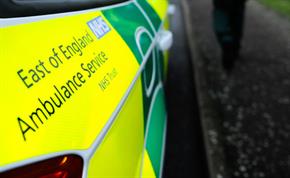
Associate ambulance practitioners (AAPs) will soon be joining operational staff out on the road.
The guidance below details all you need to know when working with our new AAPs.
Our AAPs will have completed a 14-week course, and a one day observational shift, before starting work. After this they will be required to complete three 12-hour extra shifts or the equivalent hours.
During their initial 750 hours in operations or until they return to one of the training centres for week 15, they will be on the road independently, but will not be able to discharge a patient from scene alone.
Our new recruits may require support with their clinical decision making and will be required to work with a qualified technician or above to validate the signing off of skills for their portfolio.
Until they have been successful with week 15, they will not be able to independently complete ECG interpretations, or discharge patients on scene.
Please find below some questions and answers with regards to AAPs:
Q: Can they use the defibrillator in manual mode?
A: Yes, after the 14-week course they will be able to defibrillate independently.
Q: Can they work with an emergency care assistant (ECA)?
A: Ideally they will work alongside a qualified technician or above to consolidate learning and to produce evidence for their portfolio. An ECA is unable to sign off evidence.
Q: If working with an ECA, who is the lead clinician?
A: The AAP is the lead clinician, regardless of them being unqualified or qualified.
Q: Are they able to recognise recognition of life extinct ROLE?
A: They are able to recognise ROLE with patients who have conditions unequivocally associated with death.
Q: What is the difference between a qualified and an unqualified AAP?
A: A qualified AAP will be able to discharge patients on scene and will have had training on ECG interpretation.
Q: How much mentoring will the AAP require?
A: The AAP will meet with their mentor or lead mentor on the local induction. They are then required to work alongside their mentor once every 12 weeks as a minimum, but this does not have to be in a third manning role. During this time they will need, alongside their mentor, to review their individual learning plan in order to action development needs.
Q: How often will the AAP have to return to the training centre?
A: Once the AAP has completed their 750 hours and portfolio of evidence, they will be invited for a return week to qualify as an AAP.
Q: Is the AAP portfolio of evidence the same as the student paramedic one?
A: No, the AAP portfolio of evidence is different. Workshops will be run for mentors detailing how to assist with their completion.
If you have any queries, please contact Paramedic Victoria Bryning at victoria.bryning@eastamb.nhs.uk.
If you would like to download the Q&As, you can do so here.
Published 21st July, 2016